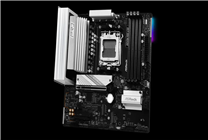The Rise of DIY Oil-Cooled Graphics Cards: Unleashing Performance Enhancements
In the ever-evolving world of PC gaming and graphics card performance, enthusiasts are continually searching for innovative cooling solutions. Enter the intriguing concept of oil cooling, where one DIY enthusiast has transformed a standard graphics card into a powerhouse using automotive transmission oil. This unconventional cooling method has opened new doors for performance enhancement, with notable improvements observed in popular GPU models.
Revolutionizing Cooling Techniques
While many gamers still grapple with traditional air and water cooling methods, a growing number of tech-savvy individuals are exploring the burgeoning field of oil cooling. The DIY approach taken by one Reddit user is particularly eye-catching, as they designed a unique cooling system for their graphics cards using an acrylic box, a submersible pump, a circulation pump, and 8 liters of transmission oil paired with a transmission cooler. This creative setup not only serves a functional purpose but also highlights the lengths to which dedicated gamers will go to optimize their systems for peak performance.

How It Works
The implementation of oil cooling is surprisingly straightforward. To set up this system, the user removes the graphics card’s shell and fan, submerges it in the acrylic box filled with transmission oil, and connects it to the motherboard. The function is further enhanced by two circulation systems:
- Circulation System One: Utilizes a small submersible pump to circulate hot and cold transmission oil.
- Circulation System Two: Leverages a transmission cooler to chill the transmission oil, ensuring efficient heat management.
With a combination of these two systems, cold oil enters the graphics card, effectively dissipating heat and maintaining optimal operating temperatures.
Performance Gains
To test the effectiveness of this oil-cooling method, benchmarks were conducted on two classic graphics cards: the GTX 1060 and GTX 1080 Ti. The tests involved high-profile games such as "Shadow of the Tomb Raider," "Far Cry 6," and benchmarks like 3DMark Firestrike and Timespy.
Results were astonishing. The GTX 1060 saw an approximate 10% performance boost, with the operating frequency elevated from 1886 MHz to 2160 MHz. When it came to the 3DMark tests, the improvement surged to 16%, thereby establishing new performance records that left spectators in awe.
For the GTX 1080 Ti, the results were equally impressive, witnessing a frequency rise from 1960 MHz to 2114 MHz, translating to a 7% increase in gaming frames-per-second (FPS). Although the 1080 Ti didn’t achieve as much improvement as the 1060, it is essential to note that this was expected given the higher capabilities of the GPU and its inherently limited room for additional performance enhancement.
Debunking Myths: Can Oil Really Cool?
Skepticism remains regarding the effectiveness of oil as a thermal conductor. The answer is a resounding yes. Liquids like transmission oil and mineral oil have a remarkable ability to absorb heat generated by the graphics card, allowing the GPU core to remain cool. Additionally, they’re typically insulating, preventing short circuits, which is a major concern in electronic cooling.
However, when stacked against traditional methods like liquid nitrogen (LN2) and water cooling, oil cooling falls a bit short in terms of thermal efficiency. Despite this, the approach does offer advantages: it is generally easier to maintain, and setup can be configured in innovative and cost-effective ways.

Conclusion
The exploration of DIY oil-cooling systems for graphics cards is an exciting development in the gaming community, showcasing ingenuity and a passion for peak performance. With significant improvements in graphics processing capabilities, this unconventional path may inspire more enthusiasts to dive into similar projects, potentially reshaping the landscape of cooling techniques.
For gamers and PC builders seeking ways to maximize their hardware, the oil-cooling solution provides an accessible yet highly efficient method. Not only does it demonstrate that creativity knows no bounds, but it also paves the way for further innovation in the rapidly advancing world of gaming technology.
In a landscape where every frame counts, perhaps the best way to gain an edge is to think outside the box—and into the oil!









